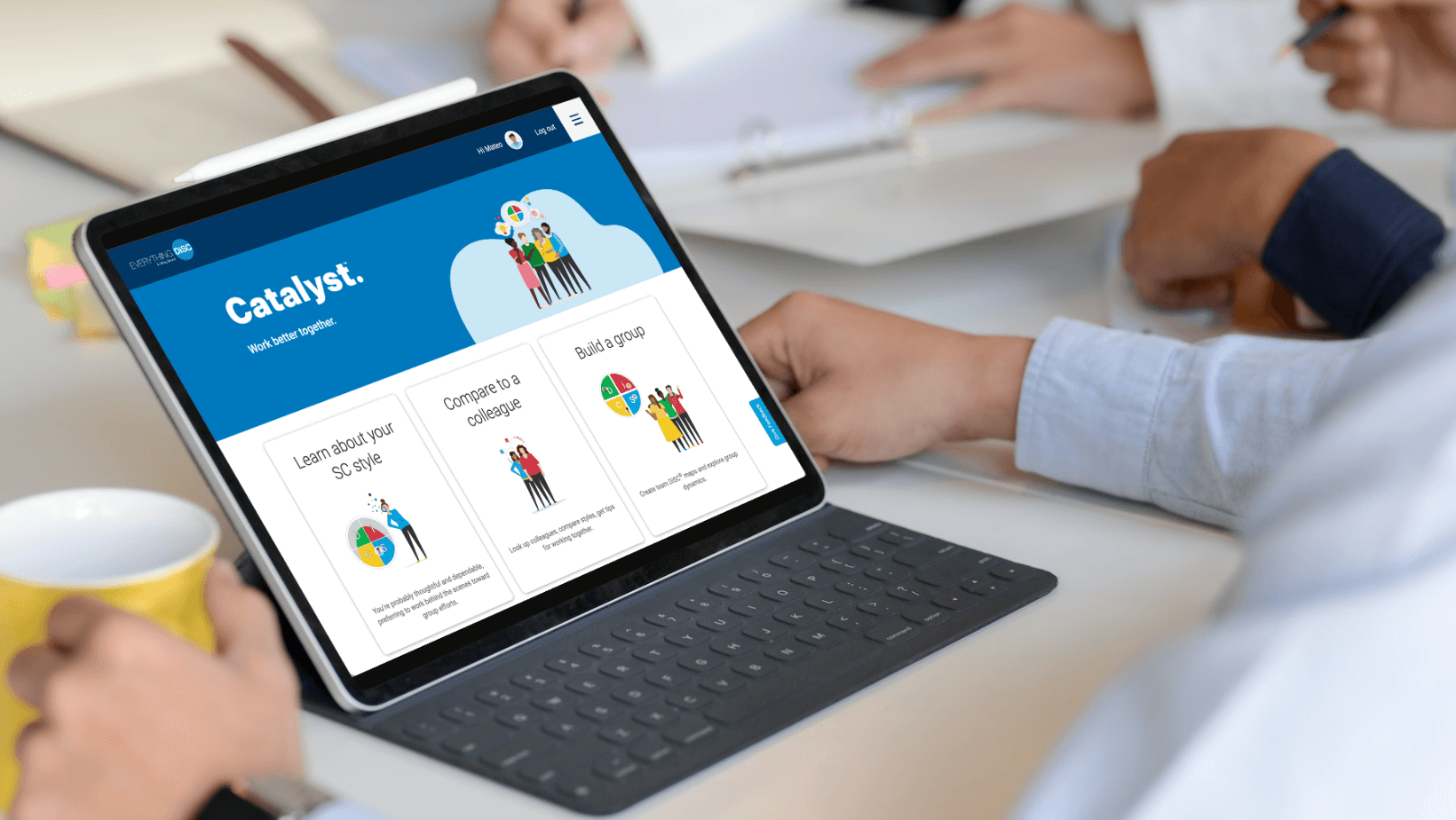Employee retention is a critical concern for organizations seeking to maintain productivity, morale, and continuity in their operations. Employee retention strategies must look beyond competitive salaries and benefits. Improve employee retention through an intentional approach that prioritizes employee engagement, meaningful goals, and relationship-building. Here are ten effective strategies for improving employee retention in your organization.
Employee retention strategies
- Build employee engagement
- Meaningful quarterly and yearly goals
- Help build relationships
- Recruit the right employees
- Create an exceptional onboarding experience
- Give employees the right tools for the job
- Offer opportunities for career development
- Let employees shape the culture
- Financial incentives
- Consistent and meaningful feedback
Top 3 ways to improve employee retention
#1. Build employee engagement
In 2023, employee engagement reached a 9-year low. There are many reasons driving employee disengagement, such as:
- remote work challenges
- uncertainty and change
- burnout
- lack of recognition and feedback
- limited opportunities for career growth
- ineffective leadership
It is important to be aware of these larger trends, while at the same time remembering that your employees are specific individuals who may feel disengaged for their own specific reasons.
Deepen employee engagement with weekly 1:1 meetings
Regular one-on-one meetings between managers and employees allow both people to build a relationship and address concerns before they balloon. According to Wiley Workplace Research, effective communication should be the #1 focus of organizations concerned with employee retention strategies. Managers have a big role to play in this. During your 1:1s:
- Ask employees about current obstacles or frustrations and act on what they say.
- Make sure you’re on the same page with ongoing projects. Clarify expectations.
- Celebrate positive outcomes and recognize good work. In a recent survey, employees rated “valued by my manager” as the second most significant factor in their decision to stay at a job.
- Make space to explore larger career goals and what development opportunities are available to the employee.
- Discuss how their work fits into the larger team and organizational missions.
Read more: Sample questions to ask at your 1:1 meetings

Connect employees to the larger company mission
Employee engagement levels are still far below their pre-pandemic numbers. Specifically, fewer employees feel connected to their company’s mission or purpose. This disconnection means low morale which means low retention.
Every employee, at every level, contributes to the organization’s success and its impact on the world. How can you remind them of this?
- Communicate the mission clearly: To feel part of the mission, people must understand what that mission is. Your team may hear about the company’s mission, vision, and values at quarterly all-hands meetings or in newsletters. However, you can make these ideals concrete for them by having a team discussion about the ways each teammate contributes.
- Connect individual roles to the mission: In your 1:1 and small team meetings, remember to discuss individual work within larger goals. No matter the narrowness of an employee’s task, you can highlight its significance to the mission.
- Give context for assignments: When delegating work or starting a new project, share the why of these tasks and how they fit into organization-wide goals. Be as transparent as you can.
- Provide monthly, quarterly, and yearly company updates: Keeping employees informed about the company’s performance, goals, and achievements is vital for transparency and trust. Regular updates, ranging from monthly newsletters to quarterly town hall meetings, help employees feel connected to the broader vision of the organization.
- Seek employee input: Listen to your team discuss the company’s mission and values. Ask them how the team could strengthen alignment. How can the mission resonate with diverse perspectives within the organization?
- Create opportunities for social impact: Offer volunteer programs, community service initiatives, or corporate social responsibility (CSR) activities that allow employees to contribute to causes aligned with the company’s mission. Engaging in meaningful social impact projects reinforces the connection between the company’s mission and its broader impact on society.

#2. Meaningful quarterly and yearly goals
Setting meaningful goals with employees is essential for keeping them motivated and feeling forward momentum in their work. Quarterly and yearly goal-setting sessions provide a structured approach to employee development. These sessions are an opportunity to celebrate achievements, discuss where work fell short and why, pivot away from low-ROI efforts, and understand employees’ career hopes both short-term and long-term.
Some tips:
- Involve employees in goal-setting. A collaborative approach fosters ownership and commitment to achieving the goals.
- Focus on quality over quantity. Avoid setting too many goals, as this can lead to overwhelm and dilution of focus.
- Establish regular check-ins. Meet often to discuss progress. Offer constructive feedback and recognition for achievements to keep employees motivated and engaged.
- Make sure they have what they need. Identify any resources, support, or training needed to help employees achieve their goals. Ensure that employees have access to the necessary tools, training, and guidance to succeed. Address any barriers or obstacles that may impede progress.
- Use goal-setting sessions for employee development. What are your employee’s career goals? How can your quarterly and yearly goal sessions include specific plans for employee development? You can even consider including one personal goal each quarter or year that you help the employee make progress on (learning to play piano, saving for a trip abroad, cooking a new meal every week, or whatever their interests are).
Use SMART criteria for goal-setting
Make sure that goals are Specific, Measurable, Achievable, Relevant, and Time-bound (SMART).
- Specific: Clearly define what needs to be accomplished.
- Measurable: Establish metrics or indicators to track progress and success.
- Achievable: Set goals that are realistic and attainable given the resources and constraints.
- Relevant: Ensure that goals are relevant to the employee’s role and contribute to organizational priorities.
- Time-bound: Assign deadlines or timeframes for achieving the goals.
Regularly revisiting and adjusting short-term and long-term goals is an important employee retention strategy, ensuring that employees stay challenged and invested in their roles.
#3. Help build relationships
Research shows that when people have friends at work, they are healthier, happier, and more productive. They are also less susceptible to burnout.
Employee retention strategies often focus on the needs of individuals, such as flex time or gym memberships. These stress-relievers are important, but not enough. As researchers Emma Seppälä and Nicole K. McNichols write, “those things frame unhappiness as an individual condition when, in reality, it’s a relational problem in need of relational solutions.”
Effective managers care deeply about their own relationships at work and look for ways to help their employees feel connected. Managers play a crucial role in fostering a positive work environment and facilitating connections among employees. Here are some ideas for helping employees build relationships at work:
- Encourage social interactions: Assuming this is true at your organization, make sure employees know that social interactions at work are encouraged. Organize team activities that provide opportunities for employees to socialize in a relaxed setting.
- Use meeting time: Allocate some team meeting time for informal discussions or icebreaker activities to encourage bonding.
- Support employee-led initiatives: Sometimes, employees can read leader-led activities as “forced bonding.” Instead, encourage employees to take the lead in organizing the social events or initiatives they would most enjoy. Provide resources or assistance as needed to help employees execute their ideas.
- Facilitate cross-department collaboration: Rotate team members across different projects or cross-functional teams so they get to meet and interact with different people.
- Create shared experiences: Plan team-building activities centered around shared interests or hobbies, such as sports, cooking classes, or volunteering. Create traditions or rituals within the team, such as weekly team lunches or birthday celebrations, to build camaraderie.
- Lead by example: Model positive behaviors and interpersonal skills by actively engaging with team members and demonstrating genuine interest in their well-being. Recognize and celebrate instances of teamwork and camaraderie.
- Facilitate mentorship and buddy systems: Pair new employees with seasoned team members as mentors or buddies to help them navigate the organization and establish connections. Encourage mentorship relationships to extend beyond professional guidance to include social support and friendship.
- Create virtual social spaces: Establish virtual social spaces, such as chat channels or online forums, where employees can engage in casual conversations, share interests, and build relationships remotely. Organize virtual team-building activities or games to foster camaraderie among remote or distributed teams.
- Promote inclusivity and diversity: Create an inclusive environment where all employees feel valued, respected, and included. Encourage diversity of thought and perspectives, and celebrate cultural differences within the team.
- Monitor team dynamics: Pay attention to team dynamics and intervene proactively if there are signs of conflict, cliques, or social isolation among team members.
Work friendships are crucial for employee happiness, but these friendships are just one part of a person’s larger relational life. A manager who supports work-life balance will also do what they can to support an employee’s outside-of-work relationships.

More employee retention strategies
#4. Recruit the right employees
Employee retention begins with hiring the right people. Companies should invest time and effort in recruiting individuals who not only possess the necessary skills but also align with the company culture and values.
Beware, though, of hiring for “cultural fit.” Many researchers, including Lauren Rivera of Northwestern University, have demonstrated the way focusing on “fit” often results in hiring managers prioritizing people like them instead of a diverse group. In her research, Rivera found that “when interviewers said they ‘clicked’ or ‘had chemistry’ with a candidate, they often meant that they shared a similar background.”
Here are some considerations for recruiting and hiring:
- Write compelling and accurate job descriptions that reflect the company culture.
- Share employee testimonials or employee-created content that provides insights into the workplace environment.
- Communicate the organization’s commitment to employee development, such as training programs.
- Involve existing employees in the hiring process. Seek their input on the recruitment materials as well as the applicants.
- Be transparent about job responsibilities, performance expectations, and career progression opportunities.
- Use pre-hire assessments for data-driven hiring decisions.
Employee retention strategies begin before a person is hired, or even interviewed. A thorough recruitment process can help ensure that new hires are likely to stay with the organization for the long term.
#5. Create an exceptional onboarding experience
Almost 30% of people quit a new job within 90 days. A strong onboarding program is an effective way to boost employee retention numbers. In fact, thoughtful onboarding can improve employee retention by 82 percent (PDF).
A positive onboarding experience sets the tone for an employee’s entire journey with a company. An organized and welcoming onboarding process helps new hires feel valued and integrated into the team. Providing comprehensive training, assigning mentors, and introducing them to the company culture are vital components of successful onboarding and employee retention strategies.
#6. Give employees the right tools for the job
Few things are as frustrating as being asked to complete a project without access to the tools and resources you need to do it well. If employees keep experiencing that frustration, they are likely to look for a different situation.
Making sure employees have what they need to succeed is one of the most effective employee retention strategies. Some considerations:
- Technology and equipment: Provide up-to-date software and equipment. Invest in the productivity or workflow tools that make sense for your team, such as project management programs. Make sure people know how to get IT support.
- Training: Access to technology and tools doesn’t do much good if people don’t know how to use them. Offer comprehensive training to ensure employees are proficient in the tools your team uses. Remember that different employees will need different levels of training, and that’s fine.
- Professional development: Offer ongoing training and professional development opportunities to help employees stay current with new technologies and industry trends.
- Needs assessments: Regularly assess the tools, resources, and support systems currently available to employees to identify any gaps or areas for improvement. Solicit feedback from employees regarding their needs and preferences regarding tools and resources.
- Knowledge sharing: Implement systems and platforms for knowledge sharing and collaboration, such as intranet portals, document repositories, and discussion forums. Encourage employees to share best practices, tips, and resources with their colleagues.
- Clear processes and workflows: Define and document standardized processes and workflows to streamline tasks and give clarity.
Regularly assessing and updating employee resources demonstrates a commitment to providing a supportive work environment.
#7. Offer opportunities for career development
When employers offer robust professional development programs, they set themselves apart in attracting and retaining employees. Recent research by Gallup found that among U.S. workers:
- 57% want to update their skills.
- 48% would consider switching jobs to do it.
- 71% say job training and development increased their job satisfaction.
- 61% say upskilling opportunities are an important reason to stay at their job.
Supporting employees’ career development must be more than lip service. Workers want to be paid to learn new skills, and they want the training to happen during work hours.
To boost employee retention, make career development available to all employees, not just higher-ups.
#8. Let employees shape the culture
In a 2024 survey by Wiley, respondents ranked positive organizational culture as the most important non-financial benefit.
However, only 20% of U.S. employees feel connected to the culture of their organization.
Empowering employees to shape the company culture creates a sense of ownership and belonging.
- Involve employees in decision-making processes, seeking their input on policies.
- Identify and empower employee advocates or ambassadors who are passionate about shaping company culture. Provide them with training, resources, and support to champion cultural initiatives and drive positive change within their teams and departments.
- Allocate resources, budget, and time for employee-led initiatives and cultural activities.
- Recognize employees whose contributions to the organization contribute to a positive and inclusive workplace culture.
- Regularly collect feedback from employees, managers, and stakeholders to evaluate progress, identify areas for improvement, and make data-driven decisions.
#9. Financial incentives
Competitive salaries, performance bonuses, and other financial incentives play a significant role in retaining top talent. Regularly reviewing and adjusting compensation packages based on industry standards and individual performance helps ensure that employees feel fairly rewarded for their contributions.
#10. Consistent and meaningful feedback
Consistent and meaningful feedback is a crucial employee retention strategy. Regular feedback provides employees with:
- Recognition and appreciation for their contributions
- Clear expectations
- Opportunities to discuss professional development
- Enhanced communication with managers
All of these contribute to employee retention. To provide feedback effectively, consider the following strategies:
- Be timely. Avoid waiting for scheduled performance reviews to provide feedback.
- Be specific. Focus on behaviors and outcomes rather than generalizations.
- Focus on growth.
- Encourage dialogue. Feedback conversations should be two-way. Practice active listening.
- Set clear goals.
- Acknowledge and celebrate achievements and milestones.
- Be consistent. Employees should not be surprised by your expectations.
- Offer training and support when asking employees to improve their skills.
- Solicit feedback. Encourage employees to provide feedback on the feedback process itself.
Read more: Using DiSC when giving or receiving feedback | Giving and receiving feedback as part of improving work performance

Personality assessments can support your employee retention strategies
Personality assessments like Everything DiSC® contribute to employee retention by improving communication, developing emotional intelligence, giving employees a common language for discussing difficult issues, building workplace culture, growing empathy, and developing leadership and management skills.
Whatever your approach, employee retention should be top of your list in 2024. By implementing the ten strategies outlined here, organizations can create an environment where employees feel valued, motivated, and invested in the long term. With these employee retention strategies, organizations can not only reduce turnover costs but also build a loyal and high-performing workforce that drives business success.


